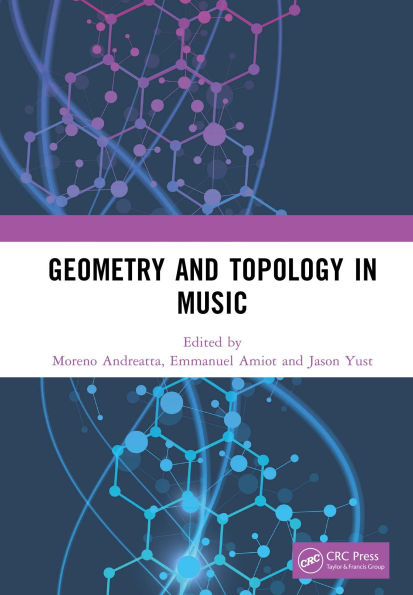This book introduces path-breaking applications of concepts from mathematical topology to music-theory topics including harmony, chord progressions, rhythm, and music classification. Contributions address topics of voice leading, Tonnetze (maps of notes and chords), and automatic music classification.
Focusing on some geometrical and topological aspects of the representation and formalisation of musical structures and processes, the book covers topological features of voice-leading geometries in the most recent advances in this mathematical approach to representing how chords are connected through the motion of voices, leading to analytically useful simplified models of high-dimensional spaces; It generalizes the idea of a Tonnetz, a geometrical map of tones or chords, and shows how topological aspects of these maps can correspond to many concepts from music theory. The resulting framework embeds the chord maps of neo-Riemannian theory in continuous spaces that relate chords of different sizes and includes extensions of this approach to rhythm theory. It further introduces an application of topology to automatic music classification, drawing upon both static topological representations and time-series evolution, showing how static and dynamic features of music interact as features of musical style.
This volume will be a key resource for academics, researchers, and advanced students of music, music analyses, music composition, mathematical music theory, computational musicology, and music informatics. It was originally published as a special issue of the Journal of Mathematics and Music.
This book introduces path-breaking applications of concepts from mathematical topology to music-theory topics including harmony, chord progressions, rhythm, and music classification. Contributions address topics of voice leading, Tonnetze (maps of notes and chords), and automatic music classification.
Focusing on some geometrical and topological aspects of the representation and formalisation of musical structures and processes, the book covers topological features of voice-leading geometries in the most recent advances in this mathematical approach to representing how chords are connected through the motion of voices, leading to analytically useful simplified models of high-dimensional spaces; It generalizes the idea of a Tonnetz, a geometrical map of tones or chords, and shows how topological aspects of these maps can correspond to many concepts from music theory. The resulting framework embeds the chord maps of neo-Riemannian theory in continuous spaces that relate chords of different sizes and includes extensions of this approach to rhythm theory. It further introduces an application of topology to automatic music classification, drawing upon both static topological representations and time-series evolution, showing how static and dynamic features of music interact as features of musical style.
This volume will be a key resource for academics, researchers, and advanced students of music, music analyses, music composition, mathematical music theory, computational musicology, and music informatics. It was originally published as a special issue of the Journal of Mathematics and Music.

Geometry and Topology in Music
130
Geometry and Topology in Music
130Related collections and offers

Product Details
| ISBN-13: | 9781040156735 |
|---|---|
| Publisher: | CRC Press |
| Publication date: | 11/01/2024 |
| Sold by: | Barnes & Noble |
| Format: | eBook |
| Pages: | 130 |
| File size: | 8 MB |
